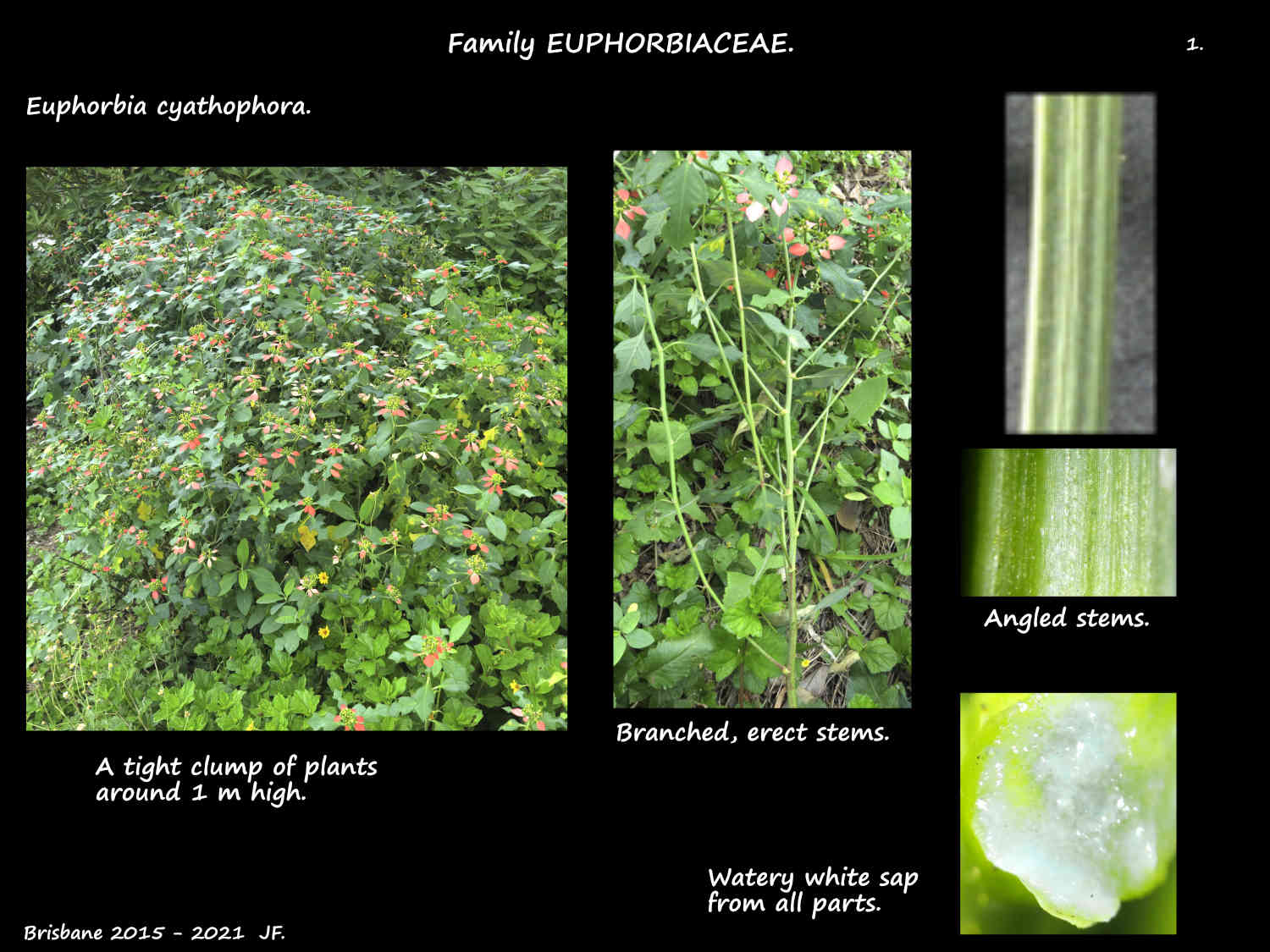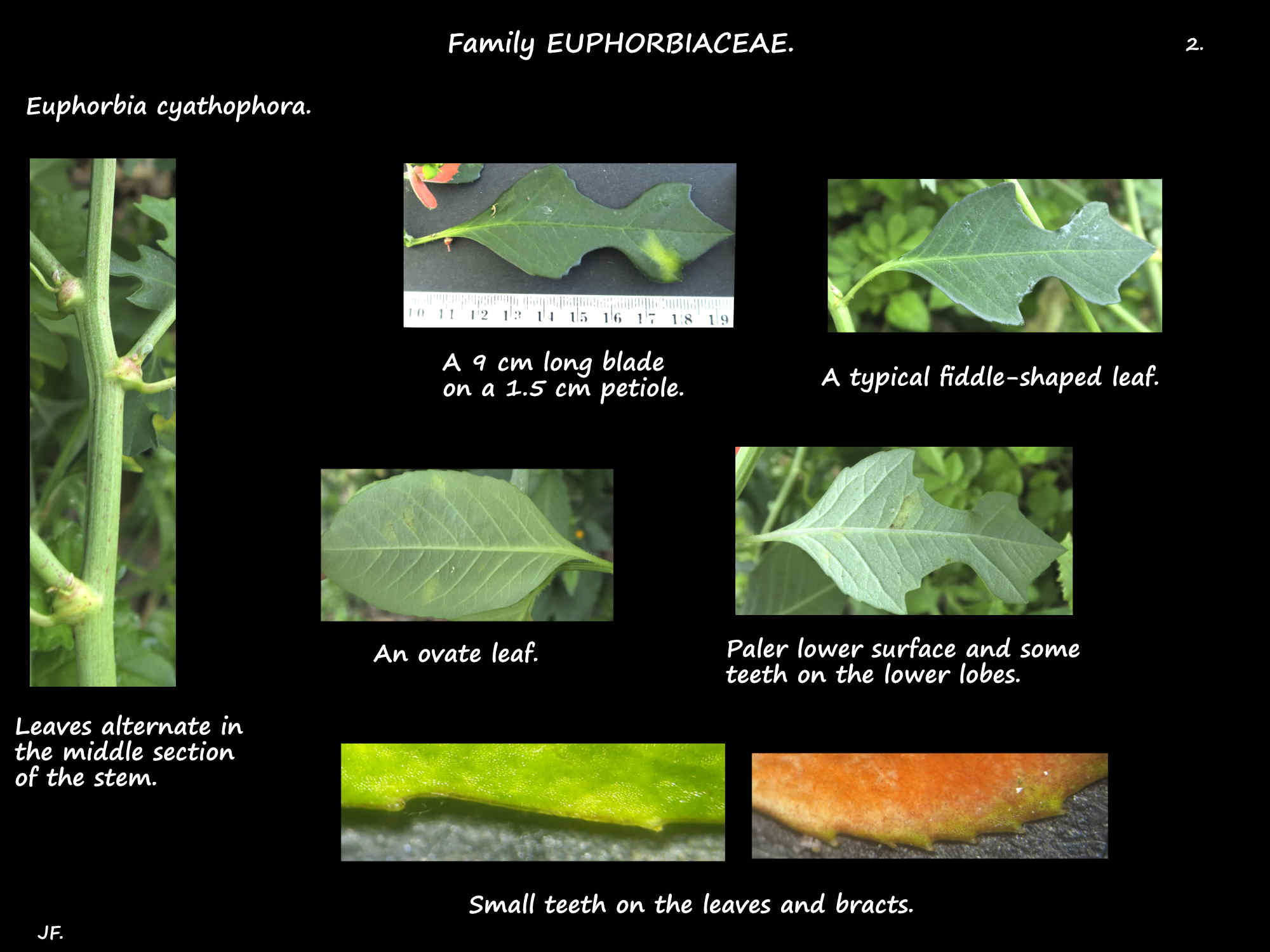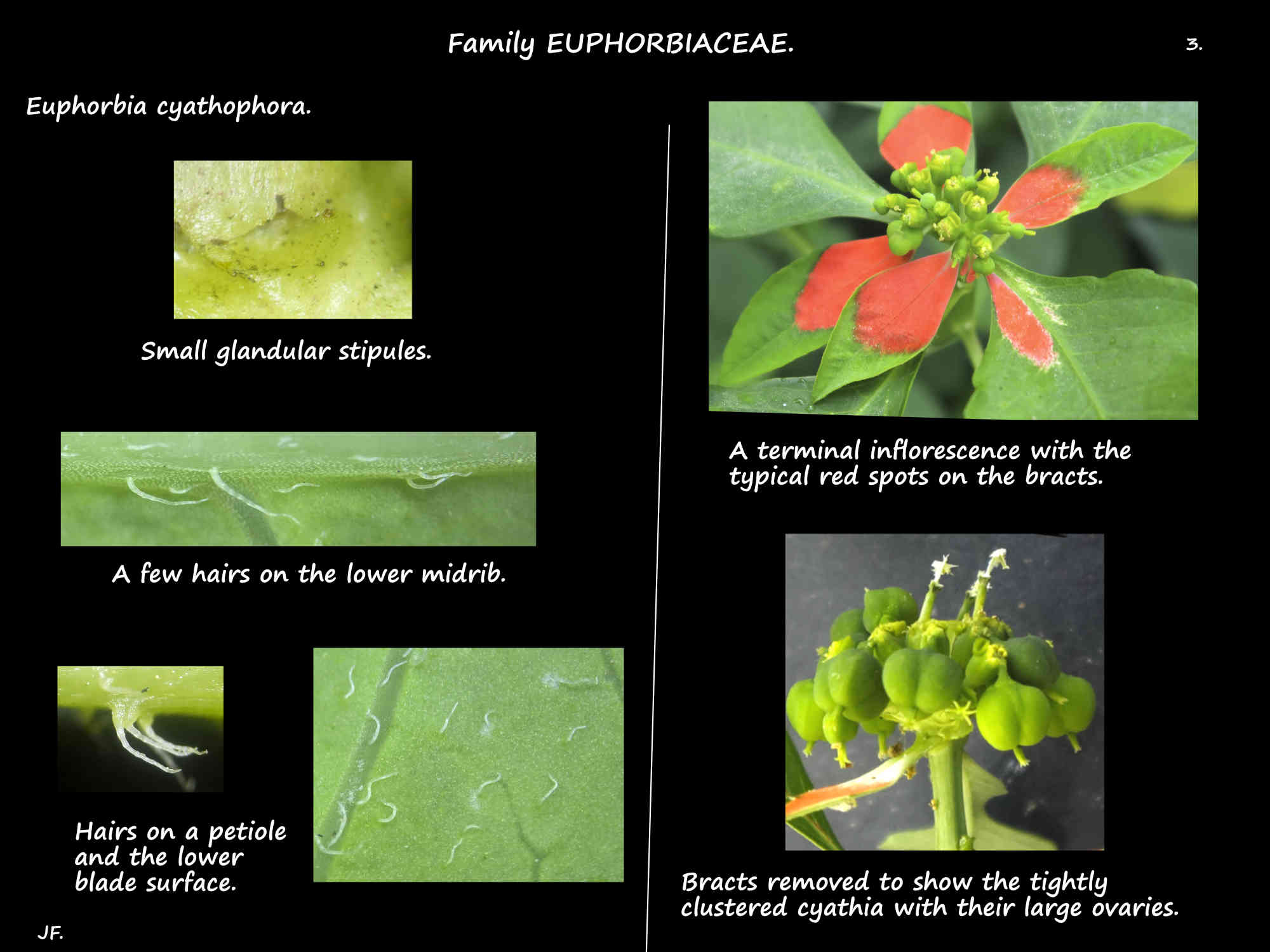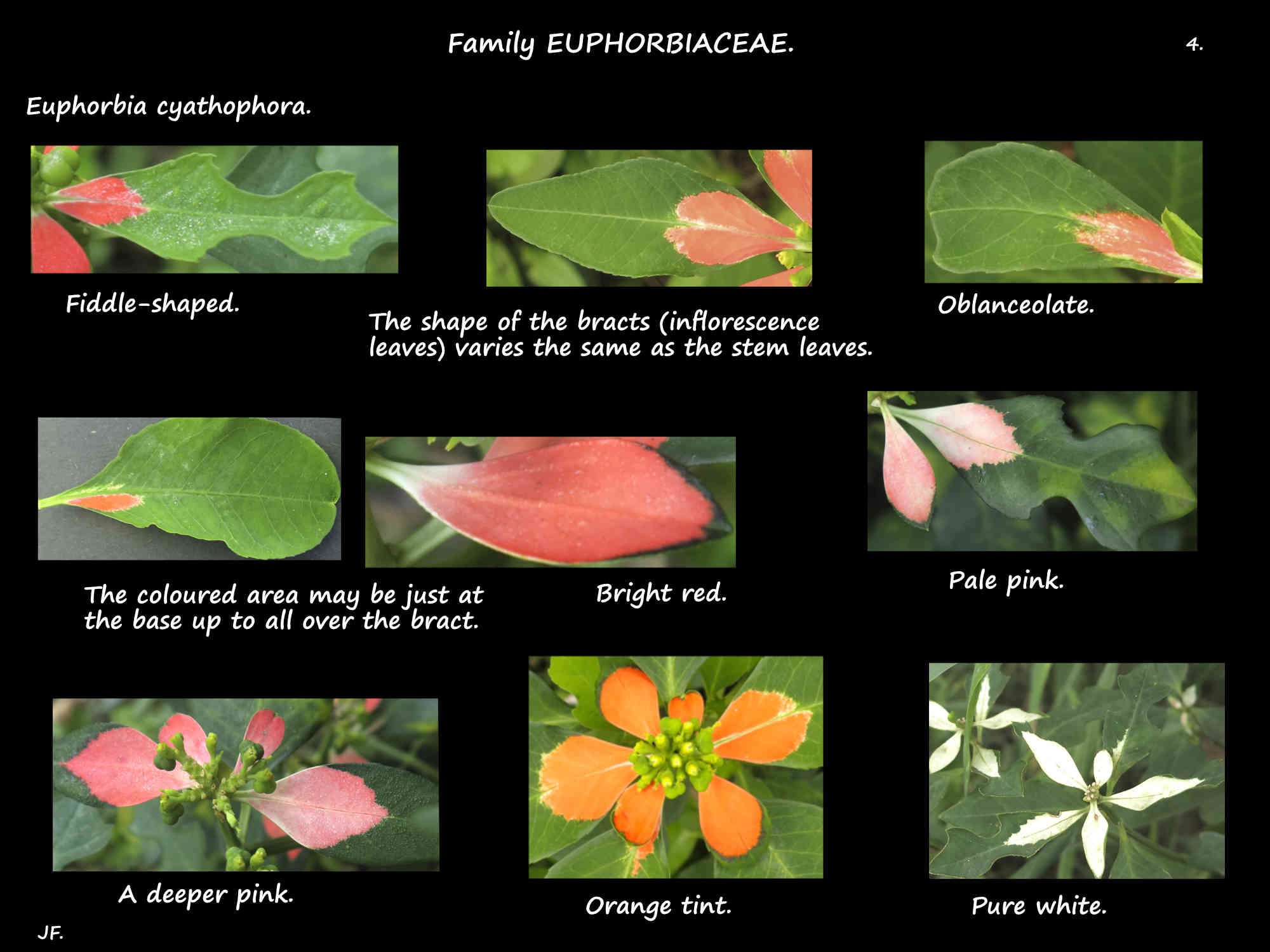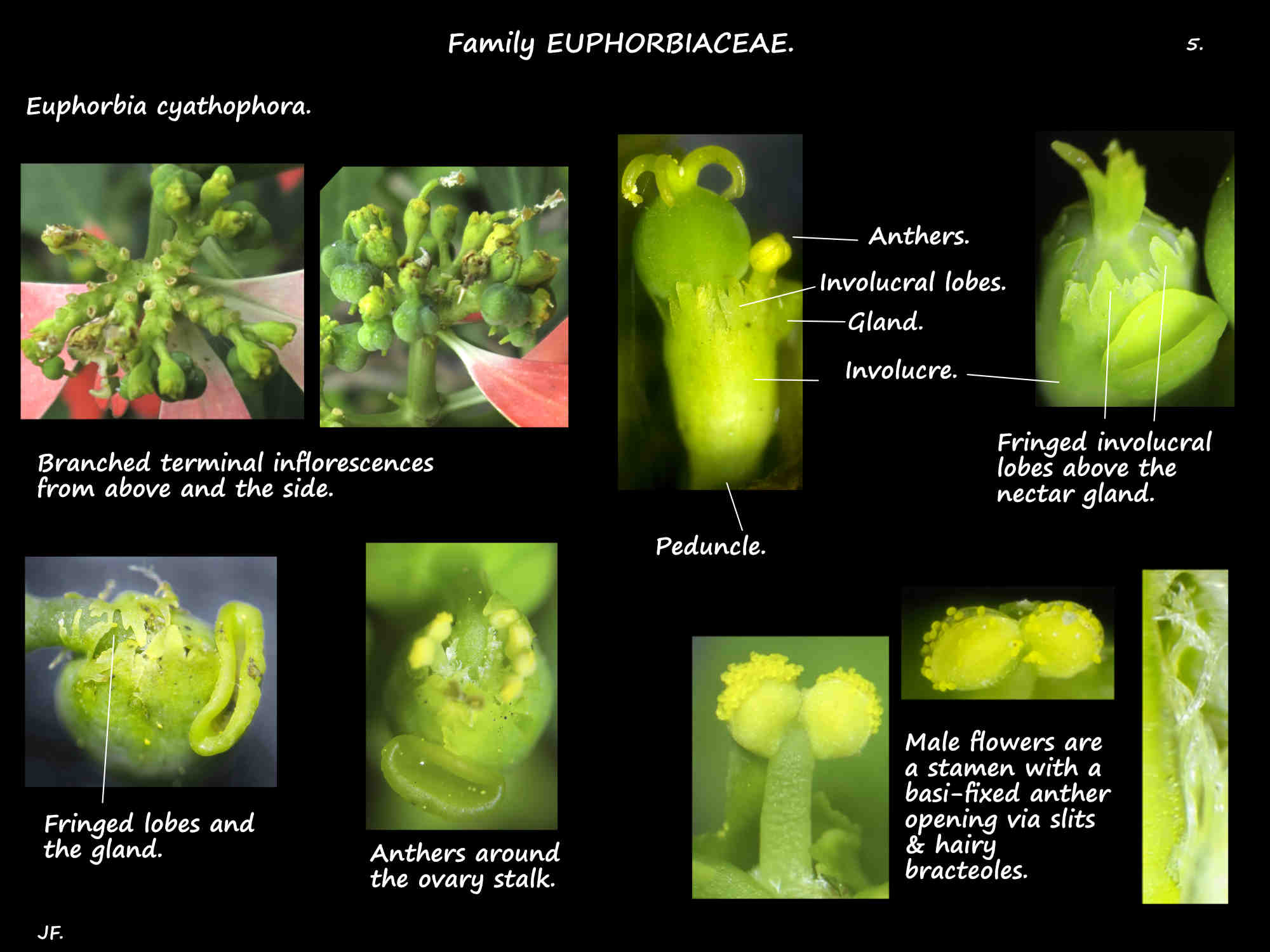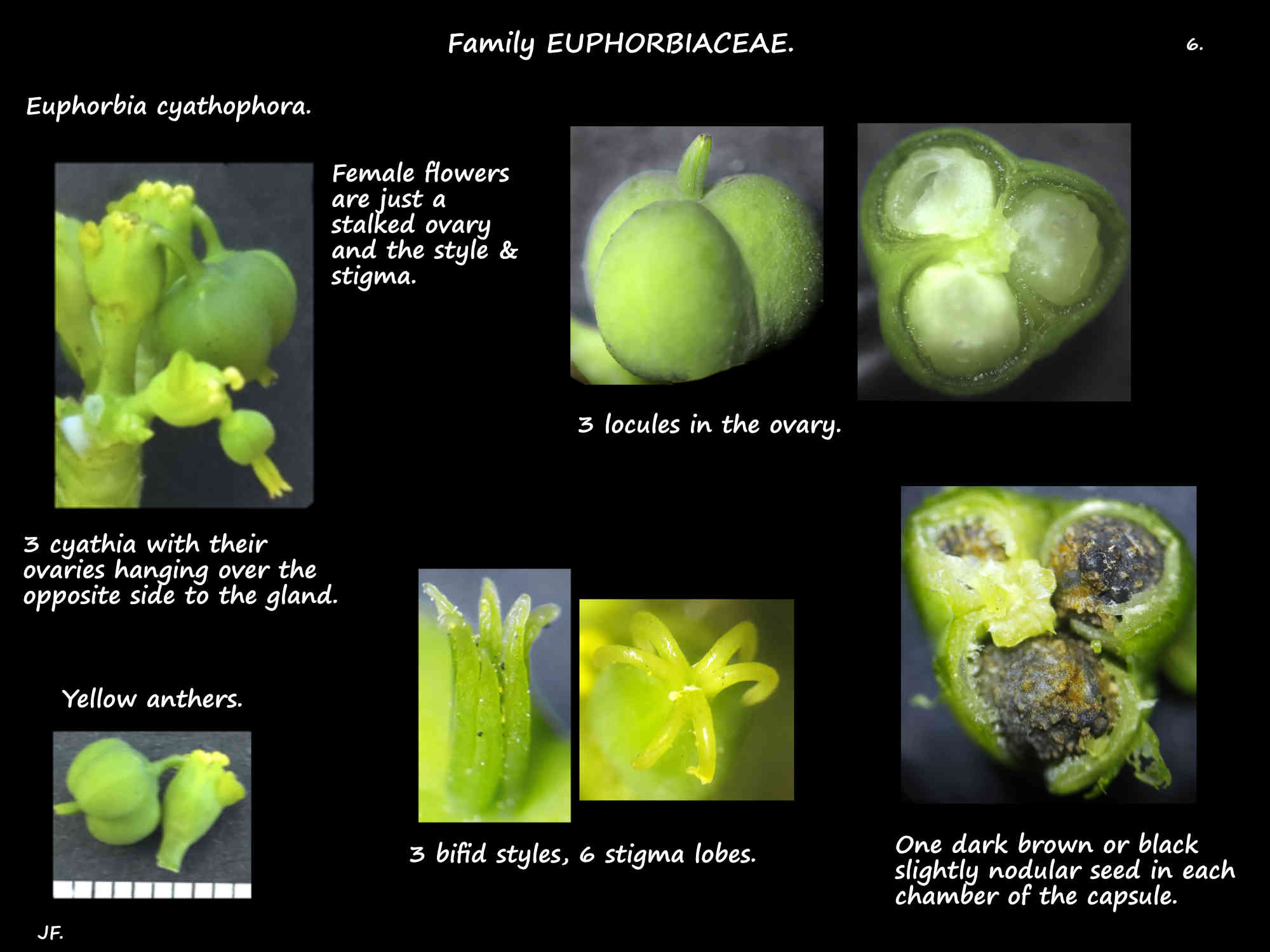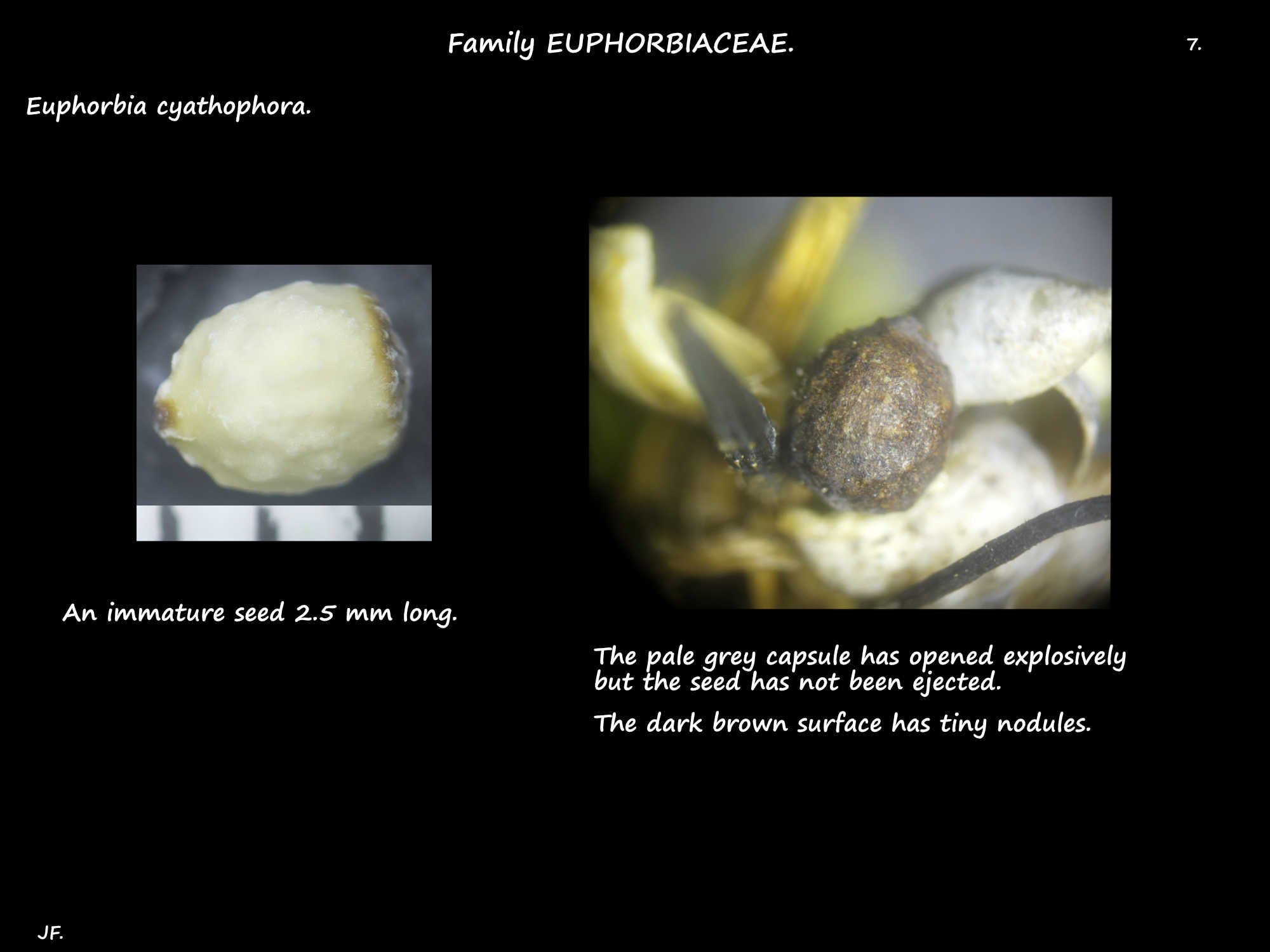Euphorbia cyathophora.
Commonly known as Wild poinsettia, Dwarf poinsettia or Painted spurge they are common in S. E. Queensland
where they were originally garden plants but are now environmental weeds.
They are erect summer annual herbs around 80 (70 to 150) cm high.
They have a taproot with lateral fibrous roots.
The hollow green stems become ridged and yellower in older plants.
The ascending side branches are mostly on the upper part of the plant.
Stems may be smooth or have a few hairs and the stems and leaves have a milky sap.
The leaves are opposite near the base and the top of the stem and alternate in the middle.
They are on petioles up to 4 cm long with small glandular stipules at the base.
The leaves are up to 10 cm long and 4 cm wide and their shape is variable, even on one plant.
Typical leaves can be described as fiddle-shaped with a constriction in the centre or lobed with 2 large
pointed lobes on either side.
Other shapes include ovate (often the basal leaves), obovate, elliptic or oblanceolate.
The edge may have teeth.
There are no hairs on the upper blade surface but the petiole and lower surface may have a few that lie close to the surface.
The upper or inflorescence leaves are the bracts and they usually have a coloured base so they resemble petals.
The coloured area is commonly red or pink but may also be white or orange.
Sometimes the whole surface is coloured.
Bracts are usually the same size as the stem leaves but may be smaller.
The dense terminal inflorescences are flat-topped clusters of cyathia.
The green, yellowish or reddish cyathia are each on a peduncle.
The bell-shaped involucre is up to 4 mm long with small teeth or lobes on the rim.
It may have a few short scattered hairs.
There is 1 (2) yellow kidney-shaped nectar gland on the side of the involucre.
It is about 1.5 mm long and 0.5 mm wide with a depressed centre.
Each cyathiuim contains a few male flowers around a central female one.
The male flowers are reduced to just a stamen and a few hairy bracteoles.
The female flower has a 3-loculed ovary on a pedicel and 3 bifid styles.
The strongly curved pedicel elongates so the large ovary lies outside the involucre on the opposite side to the gland.
The fruit are hairless capsules with each of the 3 chambers holding one seed.
The capsules are roughly spherical, 5 mm wide and have no hairs.
They open explosively spreading the seeds away from the plant.
The 2 to 3 mm long ovoid seeds are dark brown or black with small nodules on the surface.
J.F.
